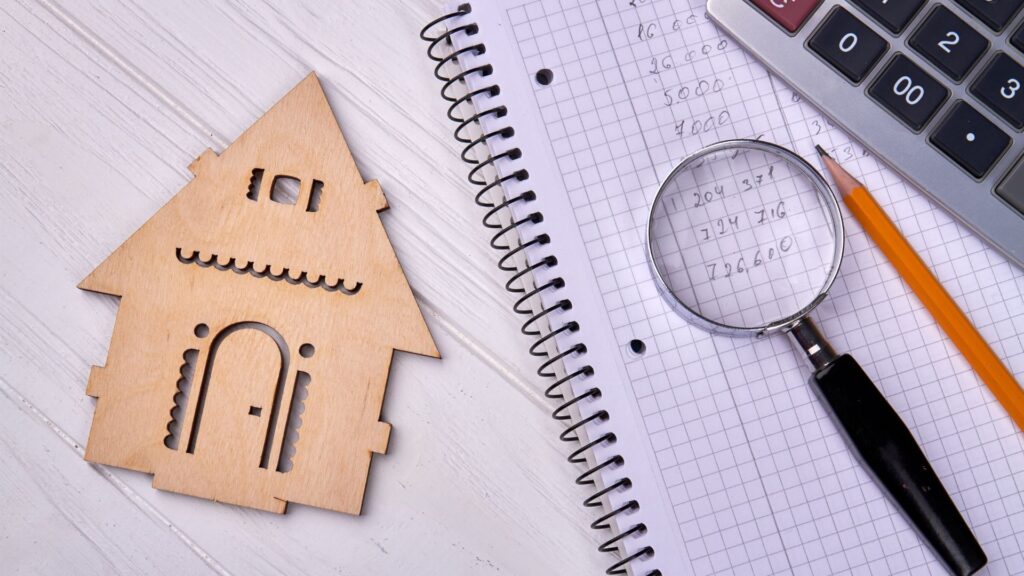Nothing is more stressful than winning the bid to a property that you love, but receiving a low property valuation from the lender. A low valuation can totally derail your financing process and force you to start the loan application process again with a new lender. Not to mention the fact that you’re financially penalised by being forced to contribute more cash towards your property purchase.
While you can’t totally eliminate the risk of receiving a low valuation, there are definitely ways you can minimise and manage this risk. In this post, we’ll go through through main aspects that are key to mitigating the risk of a low valuation:
- What is a property valuation report?
- What is the impact of a LOW valuation?
- How to manage a low valuation.
1. What is a Property Valuation Report?
Firstly, let me explain what a property valuation report is. In the case of a new home purchase – this is a report commissioned by a bank to independently verify that a property is worth what you have agreed to pay for it. There are three main types of valuations:
1) A full valuation report – this is one where a human valuation inspector physically visits the property, inspects the inside and outside, and does a manual write up on what they think the property is worth
2) A kerbside valuation – this still involves a physical valuation, but only requires the valuer to drive by to verify the property is still there
3) A desktop report or automatic valuation model (AVM) which uses statistical models or a “computer” to determine what the property is worth.

A full valuation is typically conducted for high end or new properties and properties where a valuation is contested. A desktop valuation is usually suitable for units, regularly sold apartments blocks and more affordable houses. And a kerbside valuation is often for properties in between
A common thread amongst all types of valuation reports is that they use settled comparable sales in the last 6 months to help derive what your property valuation should be – we’ll unpack this more in section three.

2. What is the impact of a low valuation?
The valuation report is crucial for determining the maximum loan amount that a bank is willing to safely lend you. This is in turn affects the “Loan to Value Ratio” (or LVR). For most properties in metropolitan areas, banks typically lend up to a maximum of 80% LVR.
The reason why you should obtain a loan is because you can buy something today by borrowing money you don’t have. But this is only great if prices are stable or go up. If prices go down, you will need to top up the difference between the new loan amount and your agreed purchase price.
It’s best to look at this via an example:
Imagine your next home costs you $2M and the bank’s LVR is 80%. If the valuation report comes in at $2M, this means your maximum loan amount is $1.6M and your deposit is $400K.
However, say the valuation report only comes in at $1.9M.
In this situation, the bank will only lend you $1.52M (or $1.9M x 80%). If the original purchase price was $2M, then your NEW deposit has increased to $480K.
So you have to make up the original $400K deposit, plus 80% of the $100K shortfall amount!
This situation hurts right? So how do we deal with it?

3. How do you manage a low valuation?
This leads us to the next question – how do you manage a low property valuation. Well, let me tell you prevention is better than cure, and there are some common sense ways you can significantly de-risk the chances of getting a low valuation.
The most important piece of advice is to have your loan assessed by an experience broker so you can accurately know your borrowing capacity, and then get a pre-approval so that your desired loan amount has been confirmed by a bank.
The next most important tip is to stick to your property budget once you start looking for a home. It is OK to love your next home, but being disciplined means:
- Not been drawn into heavily styled properties
- Not getting carried away at auctions and going past your limit
- Not letting go of any clauses unnecessarily such as your cooling off period or your standard settlement period.
But say you do end up with a low valuation – what do you do?
There are two main strategies:
The first “go to” strategy is to order multiple valuations with OTHER lenders where you are also eligible for a loan.
This is about getting a second, third and even fourth opinion on what your property is worth.
Unfortunately, valuers are human – subjectivity can creep in and different valuers can arrive at different conclusions with what a property is worth.
While another lender may not have been your preferred choice, and it can initiate the stressful process of having to apply for your loan again in a condensed timeframe, we find clients usually prefer to pay a slightly higher rate than to have to contribute more to a property. If you have felt you have overpaid for your property, you may even want to order multiple valuations simultaneously rather than wait for a valuation to return low, and only then order another valuation.
If you have felt you have overpaid for your property, you may even want to order multiple valuations simultaneously rather than wait for a valuation to return low, and only then order another valuation.
The second strategy is to challenge the valuation report through evidence and data.
This means contacting the selling agent or doing your own research on comparable properties that have settled in the last 6 months.
Typically, when challenging a low valuation, recent comparable sales are set out in a table or list with reasons why your property should be valued higher.
If there is an inferior or similar property that sold at a higher price or a higher square metre rate than the property you have purchased, then this is a very good reason for a valuer to review the valuation report and increase your property’s stated valuation.
Also, the more comparable properties on your list the better, and you should also list out qualitative reasons about why a property is inferior or superior – whether it’s due to aspect, age, size or quality of finishings inside the property.
I would like to warn you though, it is notoriously hard to challenge a valuation, and few valuations – even when well challenged – get revised to the contracted price.
This is just speaking from experience, and we think there is a human element to it, that valuers don’t want to say they are wrong after doing all the work!
Instead the main goal of challenging a valuation is to try and “close the gap”.
For example, if the $2M property I previously mentioned got revalued to $1.95M rather than $1.9M.
Then the deposit reduces to $440K instead of $480K – a saving of $40K.
Speak to a Broker
We hope this has been helpful to you. If you have any questions or comments on this topic, you are more than welcome to get in touch with our broking team.
For more tips on getting your next home, please stay tuned or head to our Youtube channel – “The Next Home Series“

